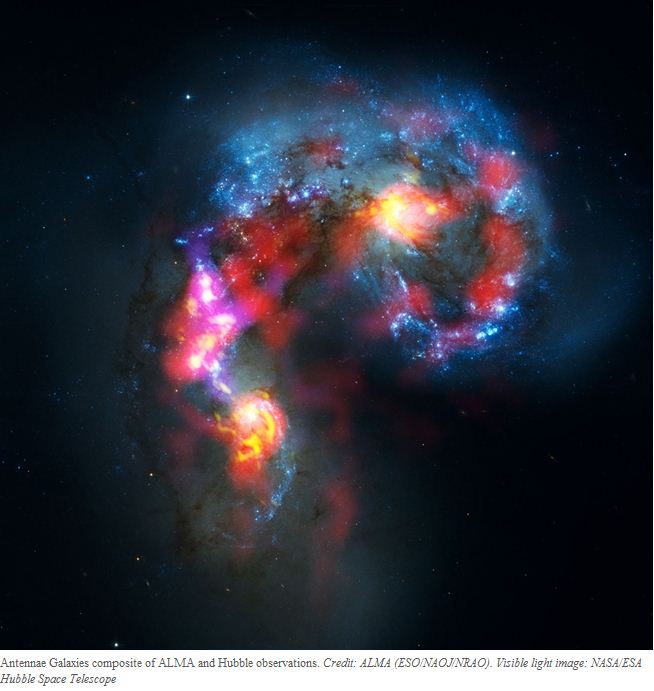ALMA’s first released image reveals a view of the universe that cannot be seen at all by visible-light and infrared telescopes.
By ESO, Garching, Germany — Published: October 4, 2011
Humanity’s most complex ground-based astronomy observatory, the Atacama Large Millimeter/submillimeter Array (ALMA), has officially opened for astronomers. The first released image, from a telescope still under construction, reveals a view of the universe that cannot be seen by visible-light and infrared telescopes. Thousands of scientists from around the world competed to be among the first few researchers to explore some of the darkest, coldest, furthest, and most hidden secrets of the cosmos with this new astronomical tool.
At present, around a third of ALMA’s eventual 66 radio antennas, with separations up to only 410 feet (125 meters) rather than the maximum 10 miles (16 kilometers), make up the growing array on the Chajnantor plateau in northern Chile at an elevation of 16,400 feet (5,000 meters). And yet, even under construction, ALMA has become the best telescope of its kind — as reflected by the extraordinary number of astronomers who requested time to observe with it.
“Even in this very early phase, ALMA already outperforms all other submillimeter arrays. Reaching this milestone is a tribute to the impressive efforts of the many scientists and engineers in the ALMA partner regions around the world who made it possible,” said Tim de Zeeuw from the European Southern Observatory (ESO).
ALMA observes the universe in light with millimeter and submillimeter wavelengths, roughly 1,000 times longer than visible-light wavelengths. Using these longer wavelengths allows astronomers to study extremely cold objects in space — such as the dense clouds of cosmic dust and gas from which stars and planets form — as well as distant objects in the early universe.
ALMA is radically different from visible-light and infrared telescopes. It is an array of linked antennas acting as a single giant telescope, and it detects much longer wavelengths than those of visible light. Its images, therefore, look quite unlike more familiar pictures of the cosmos.
The ALMA team has been busy testing the observatory’s systems over the past few months in preparation for the first round of scientific observations known as…….
Click here to read the full article on the Astronomy website…

